CS194-26: Image Manipulation and Computational Photography
Spring 2020
Project 5: Photo Mosaics and Auto-stitching
Kamyar Salahi
Overview
This project consists of utilizing projective transformations in order to generate mosaics as well as rectifying images.
Part 1: Warping and Mosaics
Rectification - we want to warp an image into a rectangular equivalent. This can be achieved through a homography, which
is essentially a mapping between two images taken on a planar surface. The homography can be written as a perspective
transformation vector with eight degrees of freedom. This means that given a set of four correspondence points, we will
be able to generate the homography mapping one image to the planar equivalent. By selecting correspondence points on
a portion of the photography that should be linear and then using a set of rectangular correspondences, we can rectify an
image.
The a-h positions on the matrix are the eight degrees of freedom. The i is by default a 1.
Using the perspective transform, we can create a system of linear equations which we can solve directly. In the case that
more than four correspondences are used, we can use least squares to minimize noise in correspondence points and
create a more accurate homography.
We then use inverse warping to generate the rectified photos.
Original Image Rectified Image Bird’s Eye View

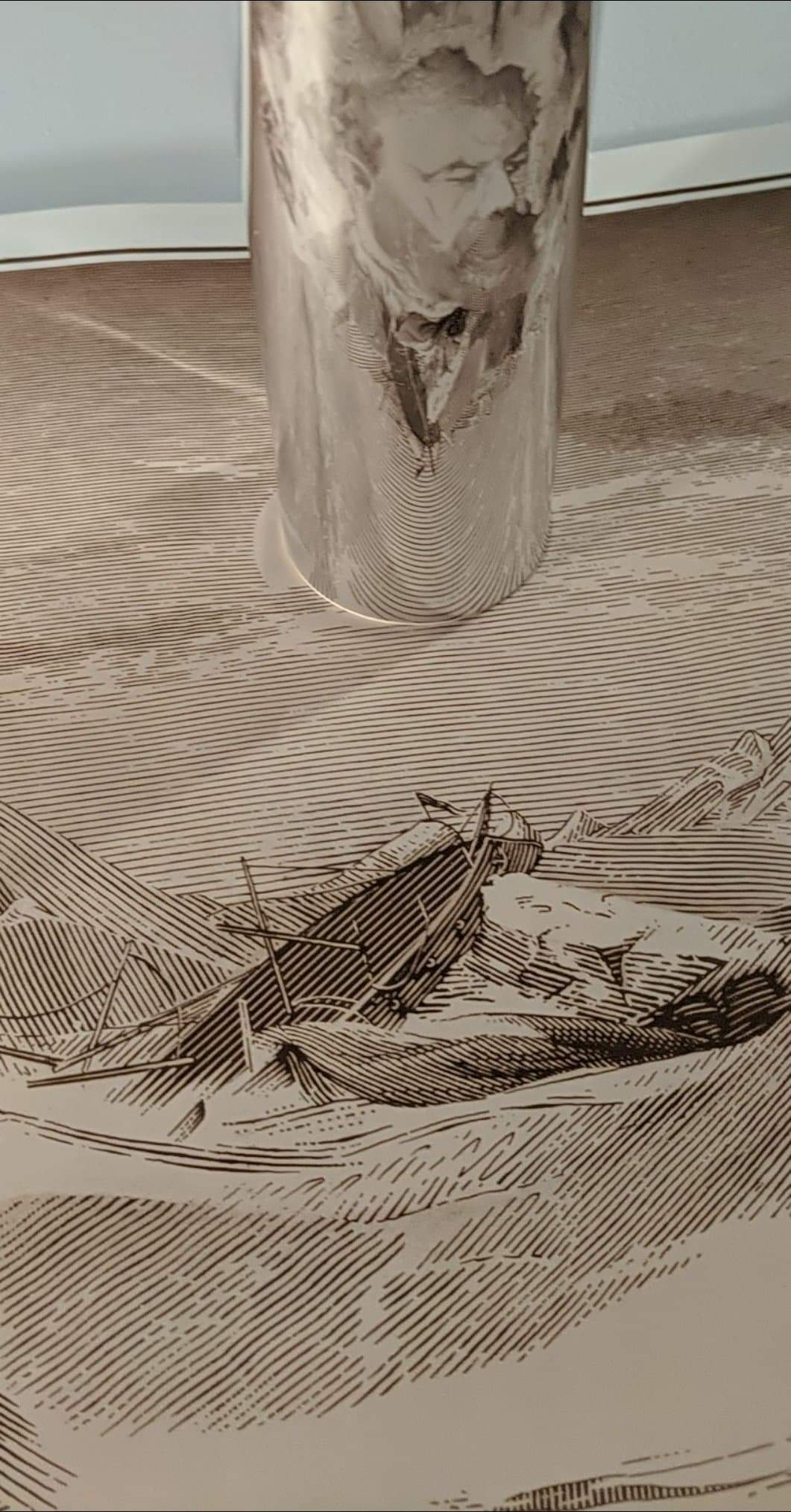

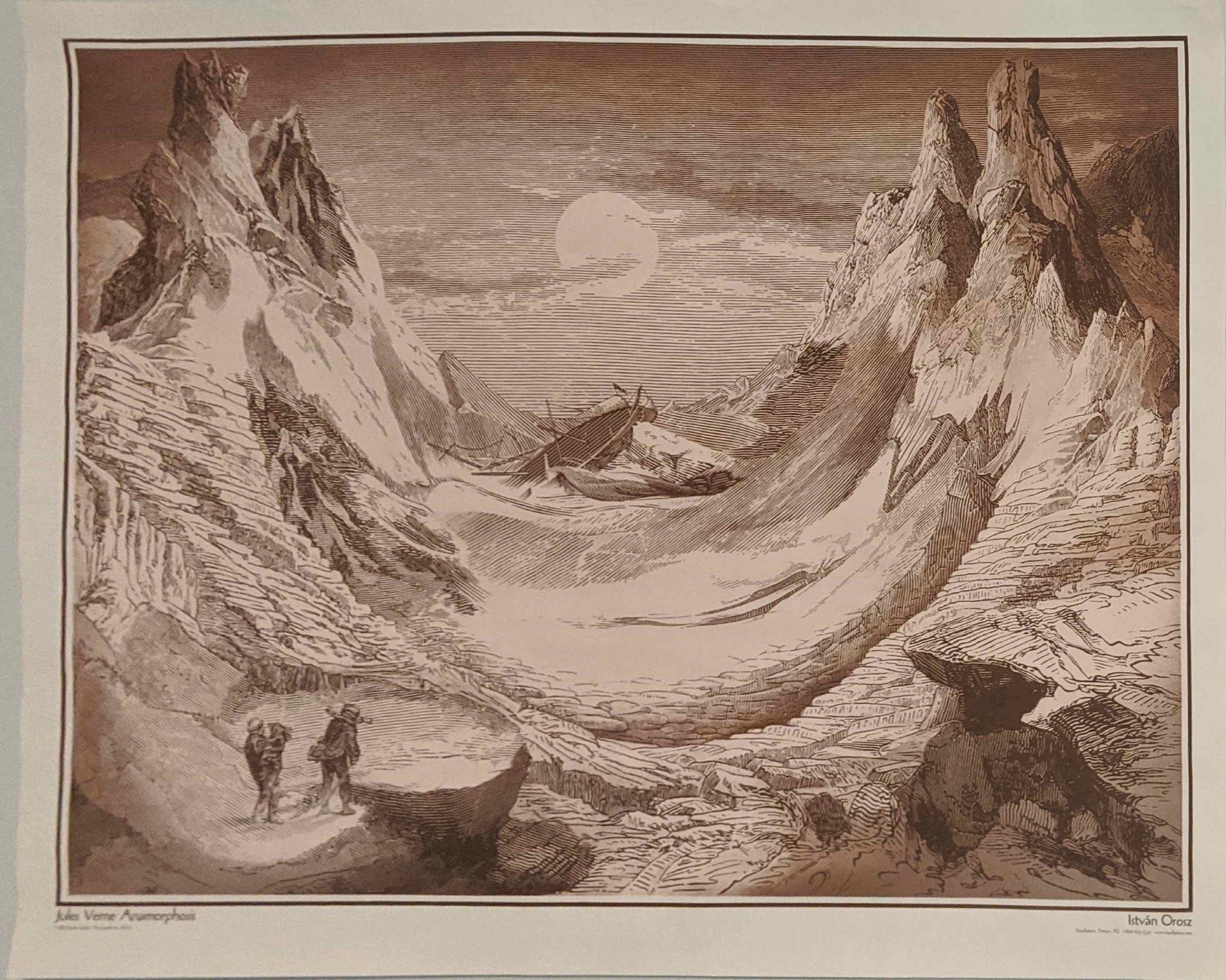
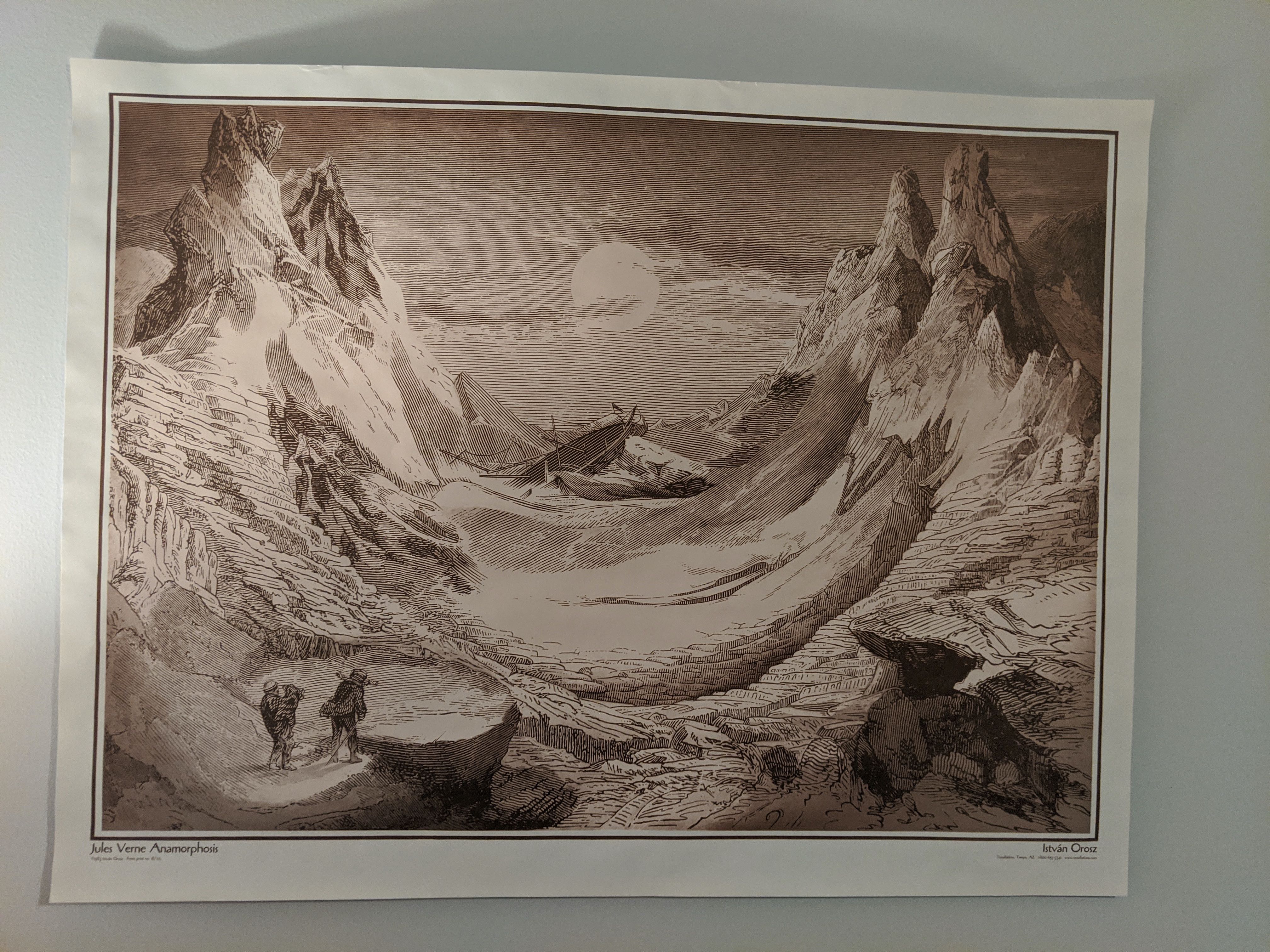
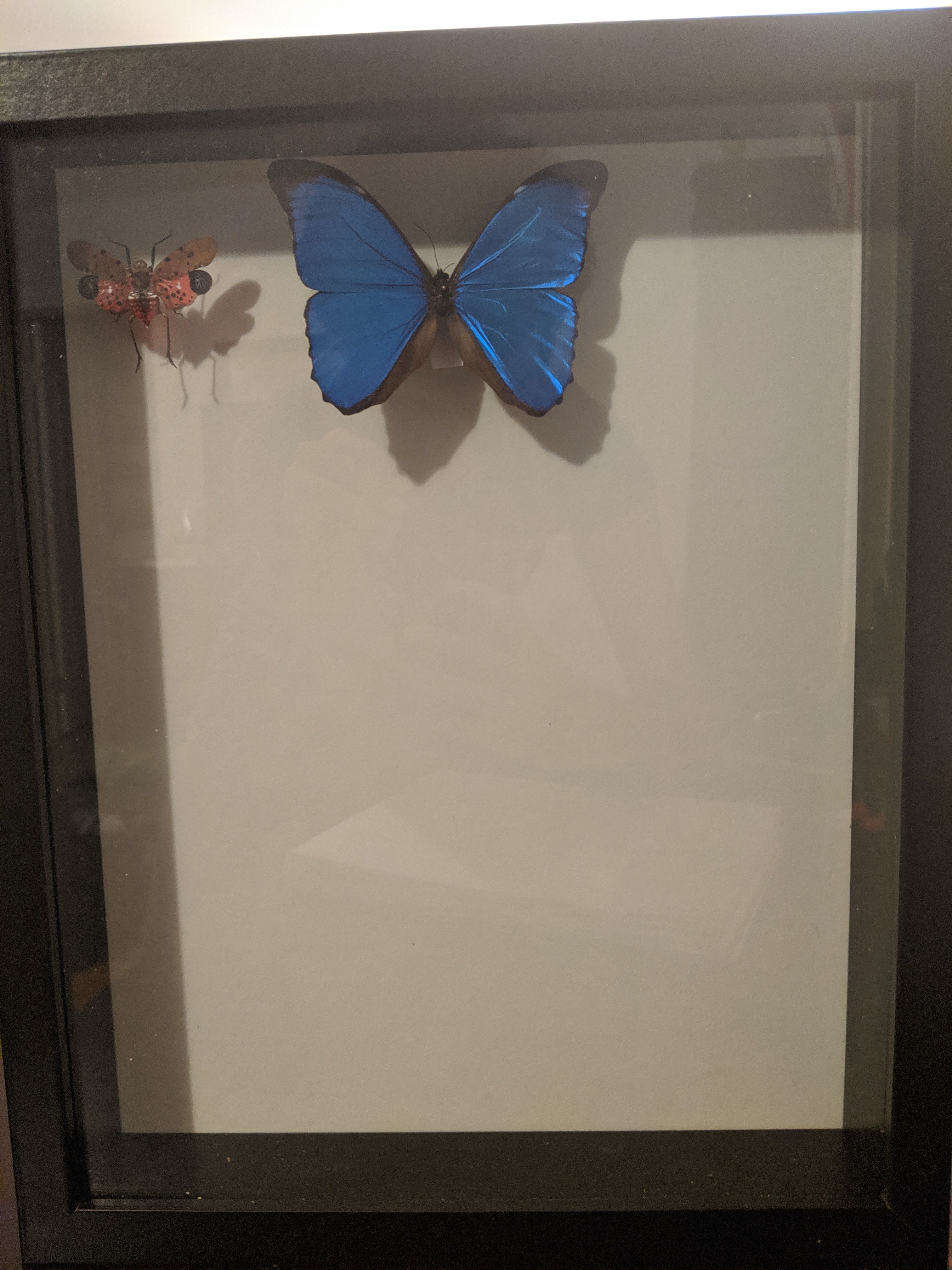

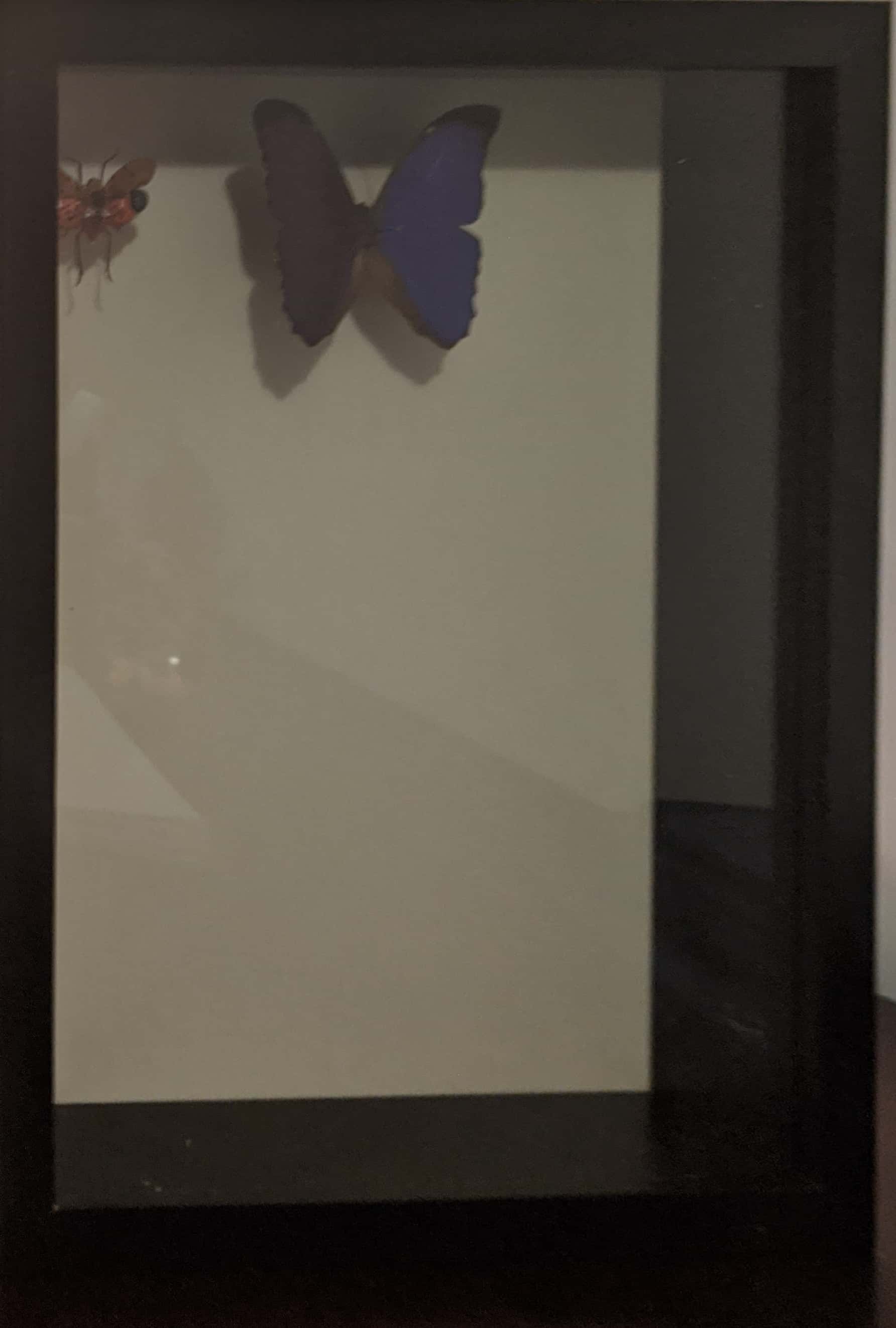
In case anyone was wondering, the above poster is a painting by Istvan Orosz that actually has a face (Jules Verne) hidden inside via a cylindrical projection. (This projection is shown above.)
As you can see, the images look a bit off when compared to the “bird’s eye view.” This is because the homography is mapping between two images on the same planar surface. The result is that depth is not really preserved in the way one may anticipate (the shadow box shows this brilliantly) and the iridescence of the blue morpho will not be visible from the plane that is not directly parallel to it. As a consequence, we get some part of the fly covered by the shadow box and do not see the iridescence of the butterfly.